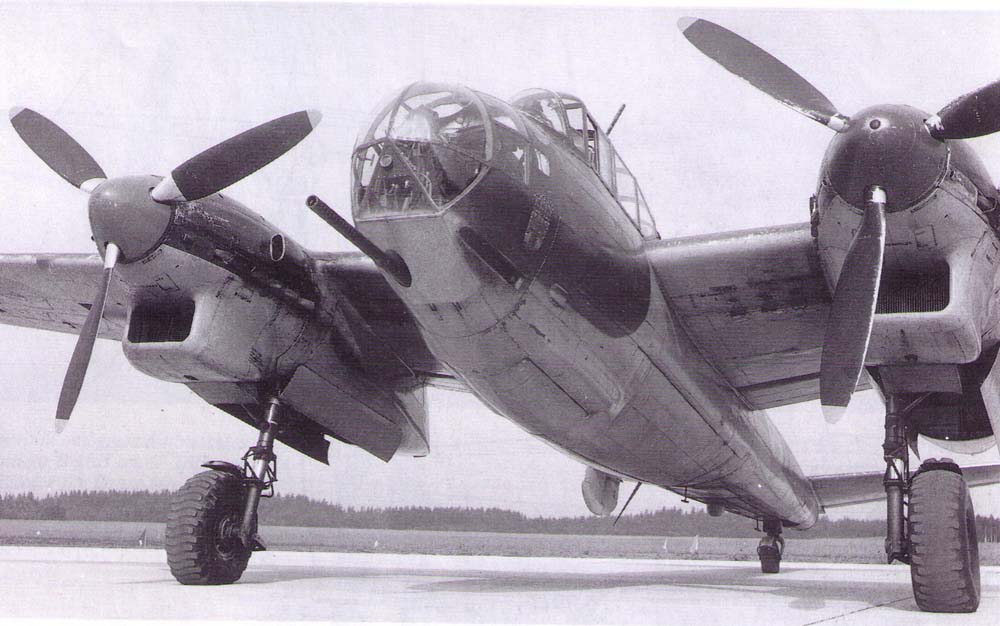I have some stats for the T-18B from another project.

Model: Saab T-18b
Technical Description:T-18B was intended as a torpedo version of the Saab 18, therefore the "T" in the name. But due to technical problems with the torpedo they decided to arm it with a 57 mm bofors cannon instead which became it's trademark.
Short History: The development started in 1941 when the Swedish air force needed a new torpedo and marine attacker plane. First torpedo trials where done with the Saab 17 and later the Ju86 but none where satisfactory. Saab then proposed a torpedo version of the New Saab 18 that was developed at the time. It was first designated Saab T-18D but later in 1944 it was re designated to T-18B. It was first to be developed from the B-18A that was powered by 2 twin wasp engines. But it was later decided that it would be developed from the B-18B that was powered by 2 DB 605B engines. Nr 18164 (B-18B) was chosen to become the prototype. While Saab was constructing the prototype many tests was done on the ground. Shake tests was done to the torpedo that was planned to be used on the T-18B, along with the smoke bomb m/39. They tested if 2x 40 mm bofors cannons could be mounted in the nose instead of the 57 mm but the nose glass shattered. Nr 18164 first flew on the seventh of July 1945. Tests where done with a 53 cm torpedo along with some other smaller torpedoes, a 1000 kg bomb, some mines and rockets. The smaller torpedoes where impossible to drop because of the high speed T-18B flew at. And the 53 cm torpedo that was designed to be dropped at high speed had to be dropped at altitudes below 15 m above sea level. The torpedo concept was soon dropped since missiles where on it's way. The T-18B ended up as an attacker and the torpedo never saw service.
Configuration: Twin engine'd heavy fighter
Production Status
First flight: Nr 18164 flew 07-07-1945
Introduction year: Nr 18285 was delivered as the first T-18B 06-25-1947
Status: Serial production
Number built: 62
Crew Data
Number of crew: First it was 3 but later reduced to 2 when it was equipped with ejection seats.
Roles of crew:
Pilot
Navigator
Gunner (later the gunners job was split between the pilot and the navigator)
Engine Data (Piston Aircraft)
Manufacturer: Svenska Flygmotor AB (Swedish Flightengine AB)
Name: Flygmotor DB 605B
Number of engines: 2
Number of cylinders: 12x (per engine)
Configuration: Inline, Inverted
Cooling: Liquid-cooled, pressurized
Supercharger / Turbo: Single-stage variable-speed centrifugal type supercharger driven though a barometrically controlled clutch; MW50 injection into the supercharger intake.
Horsepower: ?1475hp (standard) 1700hp (modified at factory) source
Fuel: B4 octane fuel
Dry weight: 720-730 kg
Gear ratio: 2800 rpm
Bore: 154 mm
Stroke: 160 mm
Cylinder volume: 35.76 liters
Compression ratio: 7.5: 1
Fuel Data
Fuel tanks:
Fuel consumption:
Fuel capacity: 1700 liters
Power Data
WEP:
Take Off Power:
Maximum Power:
Cruising Power:
Propellor Data
Designer: Vereingite Deutsche Metallwerke
Manufacturer: Flygmotor i trollhättan
Type: VDM 33 propeller
Number of blades: 3
Blade diameter:
Basic Geometric Data
Length: 13,23 m
Wing span: 17.4 m
Wing area: 43,8 m^2
Height: 4,35 m
Flap area:
Elevator area:
Rudder area:
Aileron area:
Weight Data
Empty weight: 6183 kg
Max takeoff weight: 9272 kg
General Performance Data
Maximum speed: 595-600 km/h
Minimum speed: 130 km/h
Landing speed: 180 km/h
Cruising speed: 480 km/h
Service ceiling: 9300 m
Range: 2600 km
Max Speed Chart
.. at 1.000 meters
.. at 2.000 meters
.. at 3.000 meters
.. at 4.000 meters
Rate of Climb
.. at 1.000 meters
.. at 2.000 meters
.. at 3.000 meters
.. at 4.000 meters
Armament
1x 13.2 mm FN akan in nose, ? rpg
2x 20 mm m/45 bofors akan in lower nose, 130 rpg
1x 57 mm m/47 L50 bofors akan in bomb bay, 41 rpg
Rockets: 8x heavy rockets, 4x under each wing
Bombs:
1x 1000kg bomb, mounted at 9? forward
1x smoke bomb m/39
Torpedo: 1x 53 cm 950 kg torpedo, mounted at 4,5? angle forward (has to be dropped at 15m above sea level)
Defensive armament: 1x 13.2 mm, removed when introducing ejector seats
Ammunition:
For the 13.2's: 13.2x99 FN ammo
For the 20mm's: regular hispano ammo
For the 57mm: 57x230 bofors ammo
 Author
Topic: Saab 18 (Read 5907 times)
Author
Topic: Saab 18 (Read 5907 times)


